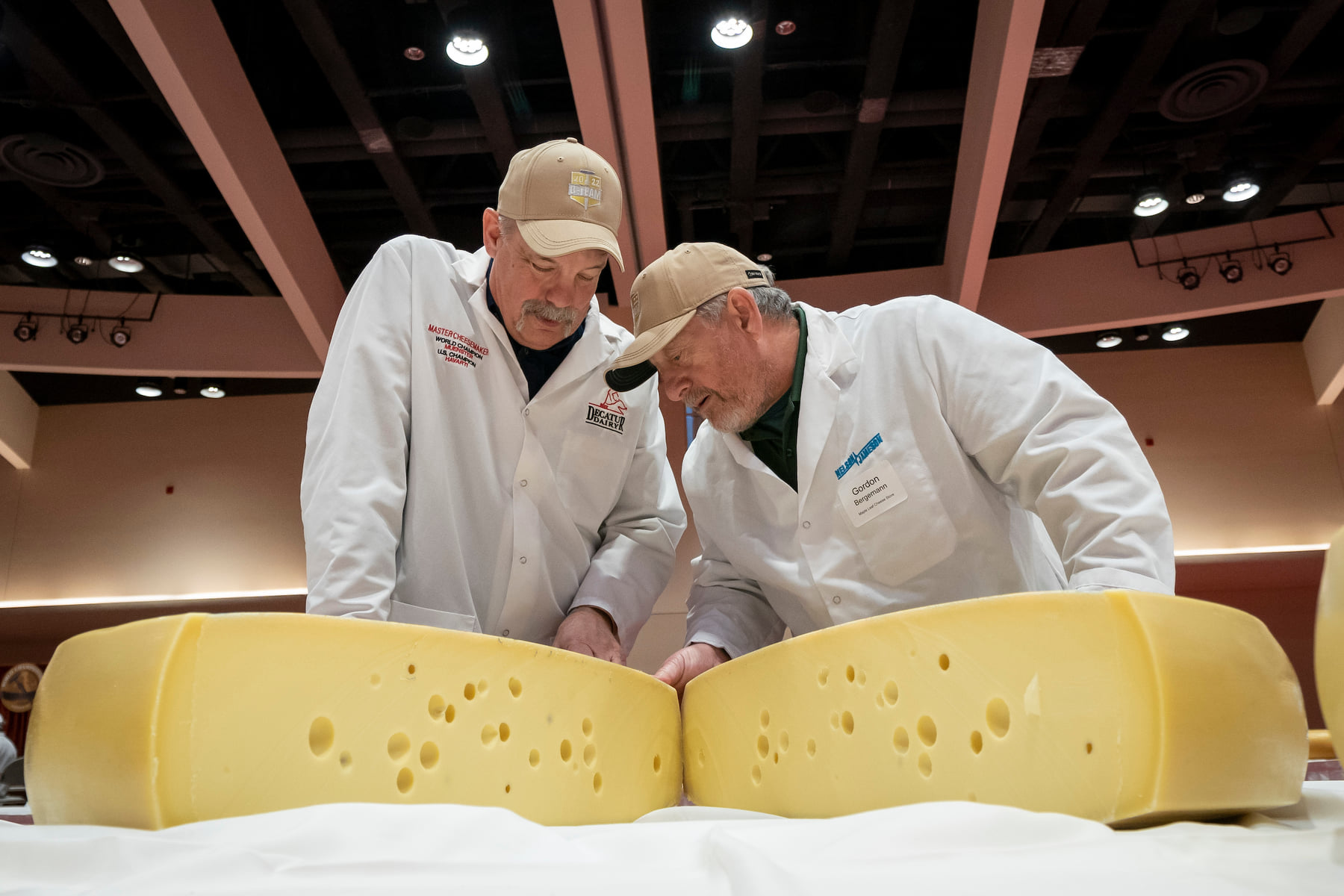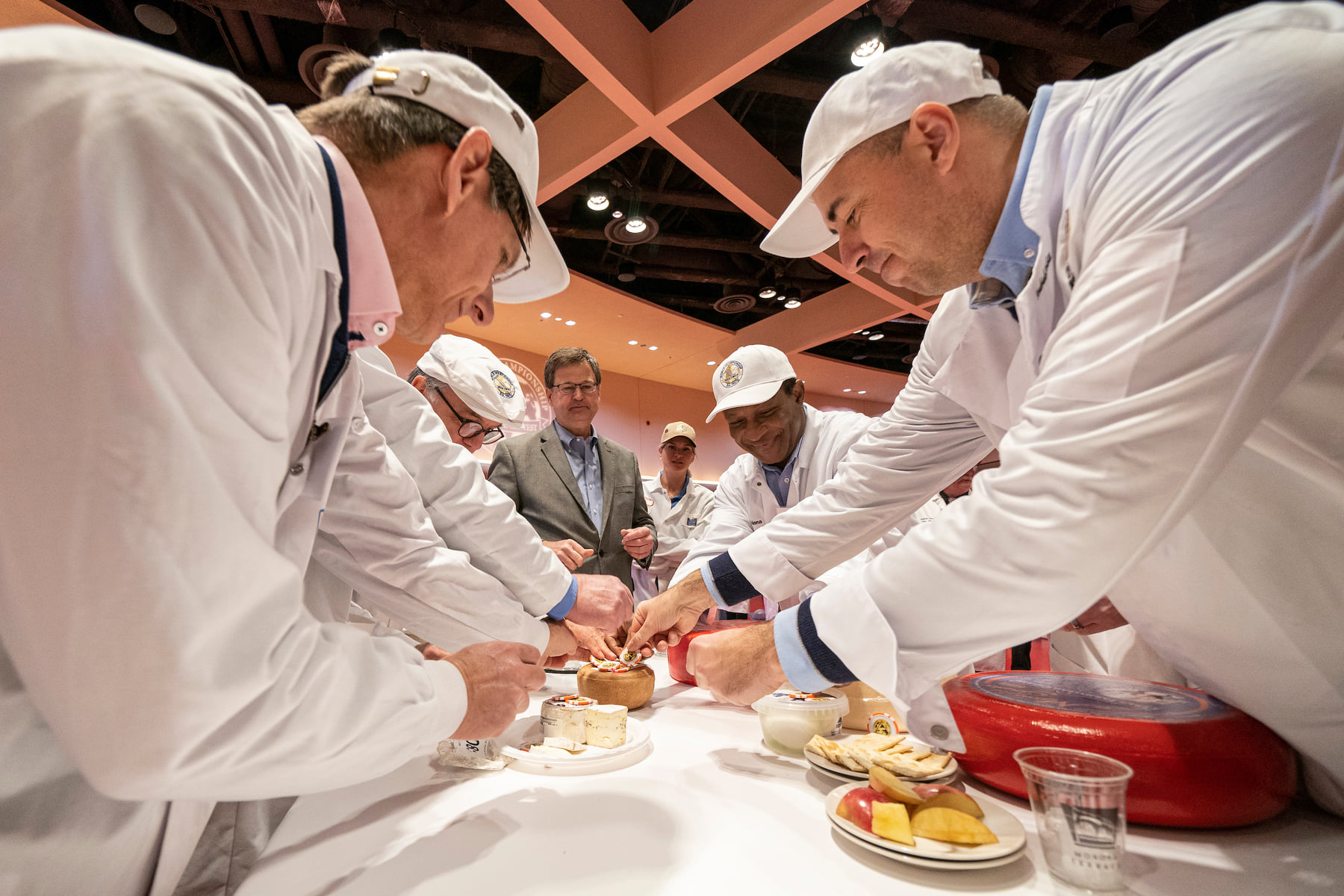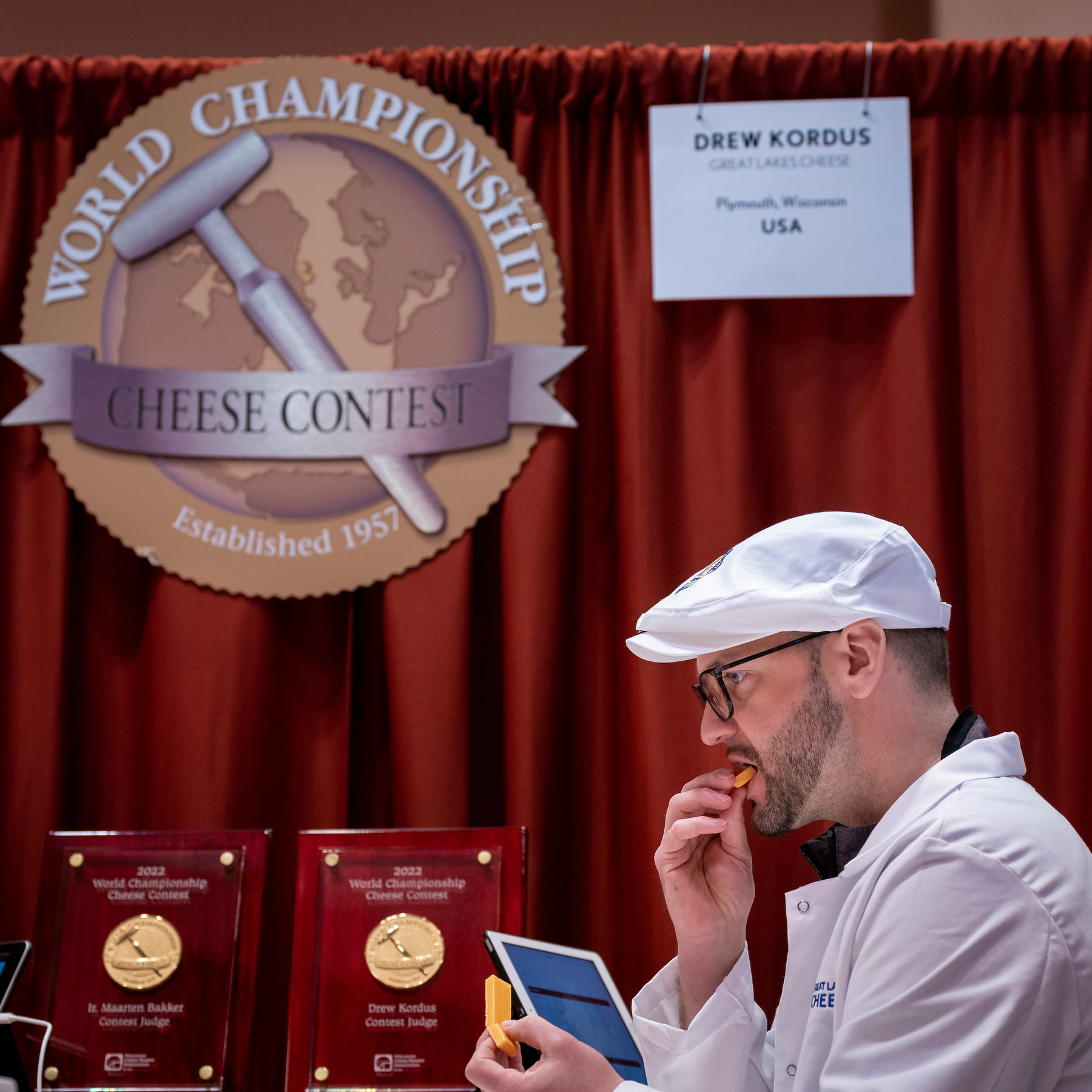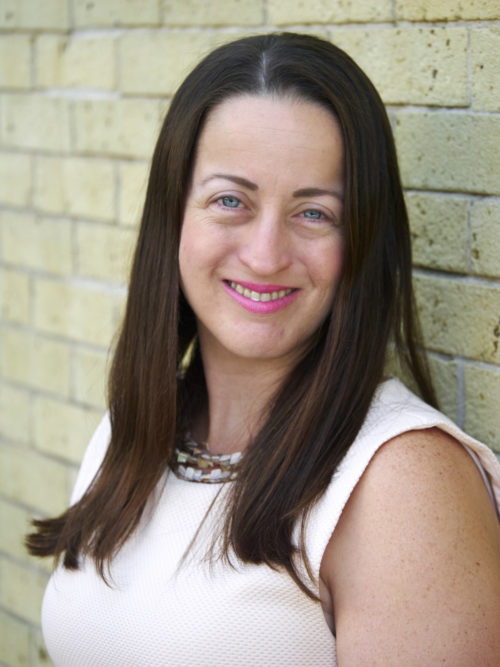
Written by Kristine Hansen | Photography courtesy of the Wisconsin Cheese Makers Association
On day three of judging at the World Championship Cheese Contest, a sea of white lab coats confers in hushed tones behind a roped-off area. The Championship Round just wrapped.
Now it’s on to the final round: for the 53 judges to select the world’s top-20 cheeses. Of the 2,978 entries representing 29 countries and 33 U.S. states, which cheeses will soar to the top? Also judged were butters and yogurts, comprising a total of 141 categories.

Judge Jessica Fernández of Lactography in Mexico City smells a piece of Red Rock from Roelli Cheese.
One judge in each group uses a trier—much like a waiter’s corkscrew—to dispense tubular samples from the wedge or wheel and discuss, as a group, the cheese’s aroma, texture, and taste. Some judges, like Spain’s Dr. Francisco de Asis Ruiz Morales of the Andalusian Institute of Agricultural and Fisheries Research and Training, are so focused during this task they appear to be in a trance. Eyes closed, he takes in a whiff of a wedge. Next, he examines the cheese as if under a microscope, then takes a photo on his smartphone, perhaps to review later (or to enlarge, so as not to miss any defects or imperfections?)
To vote, there’s the practice of poker chips.
“Each of you should be holding two chips,” John Umhoefer says into a mic, where the judges gather on the ground floor of the Frank Lloyd Wright-designed Monona Terrace and Convention Center in Madison, Wisconsin. Just beyond the ballroom’s double doors is the icy surface of Lake Monona, the tension as strong as it is inside the room.
All of the judges are rapt. The Wisconsin Cheese Makers Association’s (WCMA) executive director, Umhoefer is the master of ceremonies. “We’re going to count down ‘3, 2, 1, vote’ and you want to put your two chips on two different cheeses,” he says. As Kristen Strohmenger, the association’s events manager, chaperones each table’s judging, one group endures three consecutive ties for the same cheese. They try again. This time each judge tosses a single chip down. A winner is declared, although its identity anonymous due to a lack of labeling. (Entries often lack a producer’s logo or label.)

Cheesemakers Steve Stettler of Decatur Dairy (left) and Gordy Bergemann of Maple Leaf Cheese Store examine a cut wheel of Swiss cheese.
It’s nearly two years to the day since the last World Championship Cheese Contest. The biannual event that debuted in 1957 is always in Wisconsin and narrowly escaped being cancelled this year and in 2020 due to the COVID-19 pandemic.
Cathy Strange, Whole Foods Market’s cheese buyer and a veteran cheese judge, says this contest is her favorite. She’s now judged it 16 times. (Yes, that’s 32 years.) It’s the hyper-technical aspect that she loves. “It’s at a different level,” Strange says. “American Cheese Society has a technical judge and an aesthetic judge, and the World Cheese Awards includes chefs and media as judges.”
To judge this contest requires technical training from places like the Center for Dairy Research in Madison, Wisconsin, where 100 Whole Foods Market cheesemongers are being trained this year. “Cheese starts at 100 points and is graded on defects—like extra moisture or an imperfect rind,” says Strange. “We evaluate texture and grade on flavor. There are five components you look at, including the rind, and deduct one-tenth of a point for defects.”
“There were some great cheeses, including three I haven’t seen before,” says Strange. “It was delicious—so clean and balanced,” she says about a cheese crafted from sheep’s and donkey’s milk, and also praised a goat cheese from Mirasaka Fromage in Miyoshi-city, Hiroshima, Japan, that won its class (Soft-Ripened Goat’s Milk Cheeses). More and more female judges are arriving each year, Strange says.
New this year was a move for curds from the Natural Snack Cheese class to Cheese Curds, a debut category. “After 2020, and the growing number of curd entries, we thought, ‘We should really break this out separately,’” says Grace Atherton communications director for the WCMA, which hosts and organizes the annual contest.
Decatur Dairy, which has been making cheese in Brodhead, Wisconsin, since the 1940s, won Best in Class for its Muenster Curds.
“The stars aligned,” says cheesemaker Steve Stettler. “It’s the first year we had the category and we placed first. Cheese curds have always been a passion of mine.” Stettler is also the first Master Cheesemaker to be certified in curds, an honor he achieved in 2021.
Later that afternoon, once the results have been tallied, the judges—many of them cheesemakers—huddle in small groups in front of a stage where the top-20 cheeses are on display.
Winning for the third time (2008 and 2020) is Gourmino Le Gruyère AOP, a hard Alpine-style Swiss cheese made by Michael Spycher (and two other Master Cheesemakers) of Mountain Dairy Fritzenhaus in Bern, Switzerland. That cheese nabbed 98.423 points. The two runners-up cheeses are also from Europe: first runner-up Appenzeller Mild-Würzig, made by Käserei Niederbüren AG of Niederbüren, Switzerland (98.331 points); and Erzherzog Johann, a mature washed rind/smear ripened hard cheese crafted by Obersteirische Molkerei eGen of Knittefeld, Steiermark, Austria (98.254 points).
As each of these cheesemakers stand on stage, beaming with pride and cradling their prized cheese, it’s clear there is little, if any, competition.
“Everyone wants everyone to do good and perform well,” says Strange, “because it just lifts the industry.”
For more on this year’s World Championship Cheese Contest, click here.






